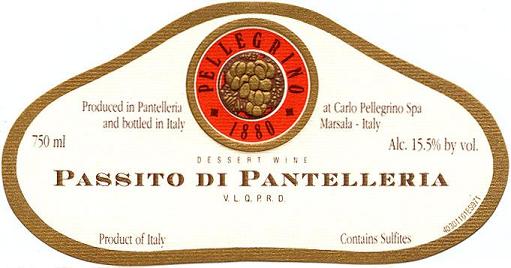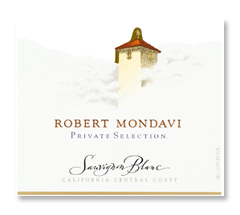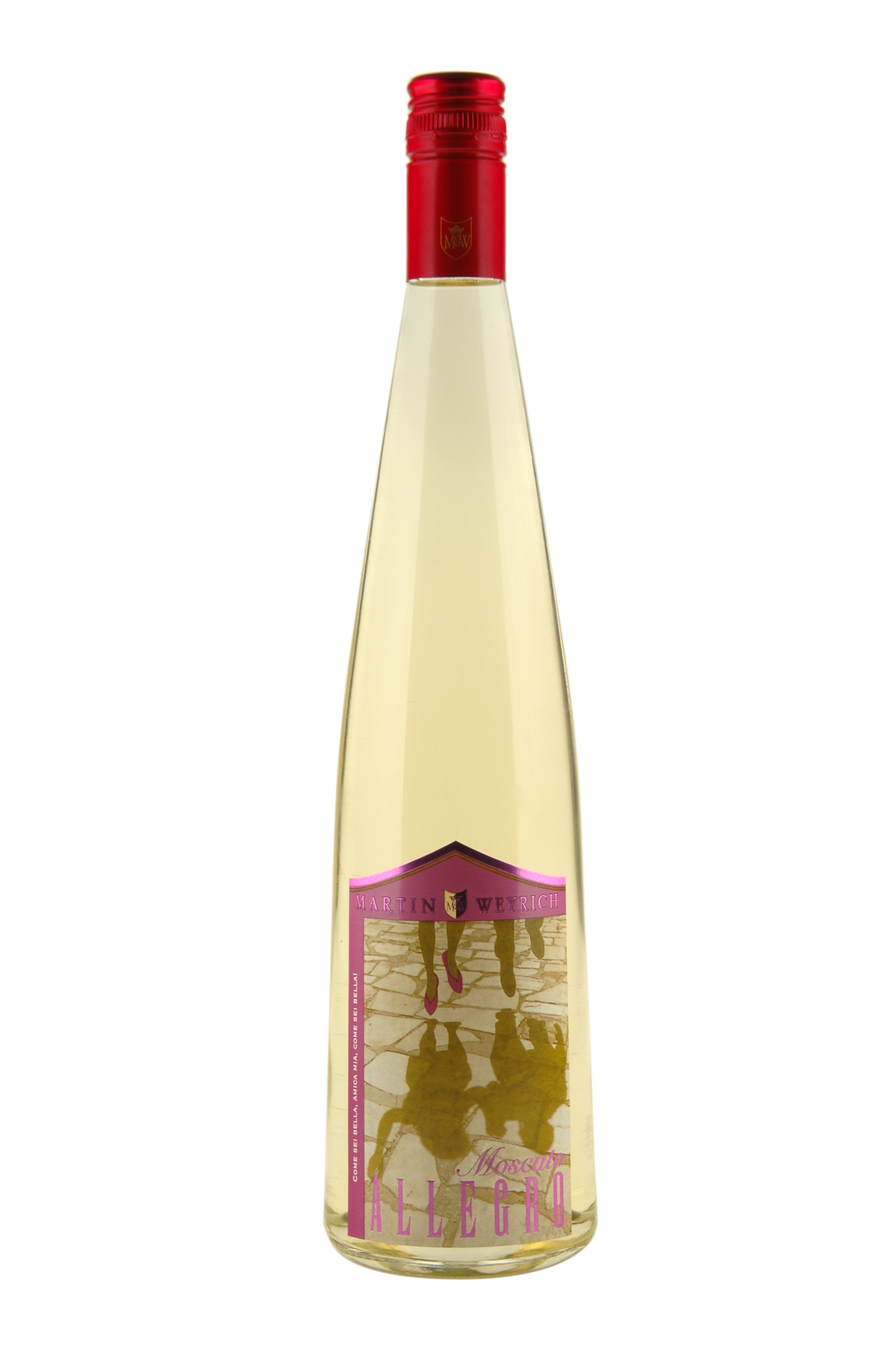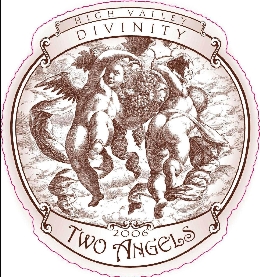Watch and listen as Luca Bosio and I dive into all things Piedmont and taste 6 of his wines.
Viewing entries in
Moscato
Cabernet Sauvignon was king when I first started drinking Chilean wines some 20 years ago. And not just Cabernet in general, but specifically bargain priced Cabernet. Most wine drinking folks I know rifled through bottles of $6 or so Cabernet Sauvignon looking for gems; we found quite a few. And for many people that’s the lingering impression of Chilean Wine. The trouble is it’s no longer a valid image. Sure you can still find a bargain and some of them are Cabernet Sauvignon, but there is so much more Chilean wine on U.S. shelves deserving your attention and your dollars that it would be a real shame to limit yourself. I knew this before I went to Chile last week. So one of my goals in visiting was to verify it and see what they had going on that might be less obvious from 5,000 miles away. So I’ve compiled a handful of strong impressions of Chilean Wines gleamed from the trenches.
- Argentina gets the attention but Chile makes some ass kicking Malbec: It’s Argentina’s signature grape so they should be at the forefront. In some ways they are, the general public thinks about Argentina first for Malbec. Some of them are terrific, but unfortunately way too many examples are made in an overtly fruit forward style with a lackluster body and no finish to speak of. I was a little surprised with the number of Malbecs I got to taste in Chile. While I knew it was there, its presence is larger than I would have guessed. More importantly the ones I tasted where almost all uniformly well made. By and large they were elegant, balanced and well proportioned. Often times they were made from old vine fruit. I hope we start seeing Chilean Malbec on our shelves in reasonable numbers soon.
- Tiers baby: I’ve often written about wineries like Rodney Strong in Sonoma County whose tiered approach to their portfolio is consumer friendly. This is true in a very large percentage of Chilean Wineries. They often have 3 or 4 tiers of wine. Often the entry-level wines retail for around $10 on our shelves and they have a top-level that might reach into the $30’s and $40’s, as well as occasionally higher. In between are wines in the teens and $20’s. What’s remarkable is that there is more often than not quality, value, and diversity to be had at each tier. In Chile wineries that produce what we view as very large quantities of wine often do so at a high level. One of the main reasons for this is simple: estate fruit. By owning the vineyards outright or having fruit under long-term contract they have a say in precisely how the vineyards are maintained. This can (and often does) lead to high quality in the bottle at each price point. The intent of a producer’s $8 Sauvignon Blanc and their $20 one are often quite different as are their appeals and projected end user. But what's important is getting value regardless of price; in Chile that is often the case.
- There are some delicious small production wines being made: Sure there are lots and lots of excellent Sauvignon Blancs coming from Chile and some tasty Pinot Noirs now too, but that’s not all. I had the opportunity to taste a delicious and marvelously dry Gewürztraminer made by Nimbus (part of the Santa Carolina Family of wines), as well as a lovely sparkling wine from Cono Sur to name a couple. Viognier is making some ripples in Chile too and hopefully before long we’ll see a greater number of them available in the US as well. I've mentioned a few whites but the same can be said for reds. More than one example of varietal Petit Verdot I had was lovely as were a couple of tastes of Carignan. In some cases these wines aren't on our shelves in the US yet, but they’re important to mention for the coming diversity and quality they represent.
- Blends will set Chile apart: Almost every winemaking culture has some blends. In places like Bordeaux they’re everything. In a lot of other places, well quite frankly they’re doing their best to mimic Bordeaux. Certainly Chile works to make great wine and learning lessons from places like Bordeaux or Napa to name two examples is part of the equation. But I also got the very strong sense that Chile is happy to be writing their own rule book when it comes to blends. Sure some of them contain the usual suspects of Bordeaux varietals. However grapes like Carménère that have been marginalized or fallen by the wayside in Bordeaux often steal the show in Chile. Additionally with red blends Syrah often makes a mark too as well as some others. Some of the most impressive wines from Chile I’ve tasted over the last 5 years have been blends. This remained constant on my trip last week where I tasted lots of delicious blends. It’s important to note that with blends like with varietal wines there are values at many price levels.
- Chilean Cabernet Sauvignon can still be a great value: While there are no longer boatloads of awesome deals on $6 Cabernet Sauvignon there are still many deals to be had. Cabernet Sauvignon from Chile when it’s grown in the right spot and treated properly in the winery can blow away a lot of countries on QPR. What I found on this trip is that the Cabernets in the $15-$25 range were particularly noteworthy in terms of value. These are balanced wines that are often perfect for everyday enjoyment as well as drinking over the next few years. At a higher cost there are some truly age-worthy wines. One example was the Casa Real Cabernet Sauvignon from Santa Rita. We tasted both the current release (2009) and a 15 year old bottle (1997). Jameson Fink, a fellow writer who was on the same trip wrote about this particular experience and it’s well worth a read.
- Diversity is King of Chile now: Everywhere we went there was something unique to taste. In some cases it was a Sparkling Rosé made from an almost lost grape. Sometimes it was a Moscato that stunned us all by how lovely and dry it was. On one occasion it was an Old Vine Sauvignon Gris. These are just a couple of examples. Chilean winemakers are experimenting in the vineyards with new farming techniques as well as plantings of new varietals or the reclamation of abandoned old vineyards. In the Winery they’re also experimenting with how they utilize oak, what they blend together and frankly just about every decision they make. What that means to us is we’re going to get to taste a wide swath of different wines from Chile.
In short I was pretty knocked out by what they have going on in Chile. I’ve really enjoyed drinking the wines from there for a long time now. But in 2012 instead of thinking of them for one thing, I think of Chile for an ever widening variety of different varietals, blends and more. Grab some Chilean wines and taste the quality, value and diversity I was lucky enough to witness firsthand.
 The Robert Mondavi Winery 2009 Moscato D’Oro is a single vineyard effort. All of the fruit for this dessert wine was sourced at the Wappo Hill Vineyard in Napa Valley’s Stags Leap District. This wine is 100% Muscat Canelli. The fruit was hand-picked over several days so that each lot would bring in different flavor profiles. Fermentation was stopped with chilling and filtration right after the sugar level dipped below 11%. This wine saw no oak treatment. The alcohol content is just above 8%. This wine is bottled in 375ml splits and has a suggested retail price of $25; it is current selling through the winery’s website for $20.
As is typical to the Muscat Canelli grape this dessert wine from the Mondavi Winery is highly aromatic. Tropical fruit aromas carry the day. Mango and papaya play roles along with lychee, and guava is present as well. These characteristics carry on through the palate where they’re joined by peach, apricot, nectarine and white plum. Those flavors continue through the finish where hints of tangerine are also present along with a wisp of white pepper. This is one dessert wine that is refreshing and crisp. When that final note dissipates it beckons you back to the glass for another sip
The Robert Mondavi Winery 2009 Moscato D’Oro is a single vineyard effort. All of the fruit for this dessert wine was sourced at the Wappo Hill Vineyard in Napa Valley’s Stags Leap District. This wine is 100% Muscat Canelli. The fruit was hand-picked over several days so that each lot would bring in different flavor profiles. Fermentation was stopped with chilling and filtration right after the sugar level dipped below 11%. This wine saw no oak treatment. The alcohol content is just above 8%. This wine is bottled in 375ml splits and has a suggested retail price of $25; it is current selling through the winery’s website for $20.
As is typical to the Muscat Canelli grape this dessert wine from the Mondavi Winery is highly aromatic. Tropical fruit aromas carry the day. Mango and papaya play roles along with lychee, and guava is present as well. These characteristics carry on through the palate where they’re joined by peach, apricot, nectarine and white plum. Those flavors continue through the finish where hints of tangerine are also present along with a wisp of white pepper. This is one dessert wine that is refreshing and crisp. When that final note dissipates it beckons you back to the glass for another sip
The 2009 Moscato D’Oro is a truly gorgeous wine. What I love about it most is that it does an impeccable job of balancing sweetness and light. All of the glorious ripe fruit flavors are on display prominently. The requisite sweetness is perfectly balanced by terrific acidity. This wine can easily be dessert all by itself. However it’ll pair perfectly with a fruit tart or an Italian style Ricotta based cheesecake.
 Dessert wines come in all shapes and sizes. Port and port style wines are perhaps the most recognizable to the average wine drinker. But just like most growing regions, or counties at least, have their own take on Sparkling Wine, so to do most of them have their own styles of dessert wine. Throughout Italy there are several. One of the grapes often used for making sweeter wines is Moscato. Today I’ll look at a Moscato based wine from Sicily.
The Pellegrino 2008 Passito di Pantelleria was produced from 100% Moscato grapes. The fruit was sourced from the family’s own vineyards in Sicily. The vines average 20-30 years of age. This family owned winery has close to 1,000 acres under vine, mostly planted to indigenous varietals. Geographically Pellegrino is located about 80 miles south of the Marsala region. Pure alcohol is added to stop fermentation. Approximately 20% of the grapes used are dried. The suggested retail price for this selection, in standard 750 ml bottles, is $27.99.
Dessert wines come in all shapes and sizes. Port and port style wines are perhaps the most recognizable to the average wine drinker. But just like most growing regions, or counties at least, have their own take on Sparkling Wine, so to do most of them have their own styles of dessert wine. Throughout Italy there are several. One of the grapes often used for making sweeter wines is Moscato. Today I’ll look at a Moscato based wine from Sicily.
The Pellegrino 2008 Passito di Pantelleria was produced from 100% Moscato grapes. The fruit was sourced from the family’s own vineyards in Sicily. The vines average 20-30 years of age. This family owned winery has close to 1,000 acres under vine, mostly planted to indigenous varietals. Geographically Pellegrino is located about 80 miles south of the Marsala region. Pure alcohol is added to stop fermentation. Approximately 20% of the grapes used are dried. The suggested retail price for this selection, in standard 750 ml bottles, is $27.99.
Aromas of Nectarine and Apricot with a lighter floral undertone highlight the nose of this 2008 Sicilian dessert wine. The apricot theme continues on the palate along with both white and yellow peach notes. Tangerine and orange flavors chime in as well, helping to produce a rounded and full flavored contingent of sweet, juicy fruit flavors. Both white pepper and nutmeg characteristics are present in the above average finish of this wine; they cling to the back of the throat, leaving a lasting impression.
What most impressed me about this wine is that it has a refreshing quality that is not often present in dessert wines. Way too often dessert wines are overly sweet and cloying, making it difficult to enjoy more than a small portion. The 2008 Passito di Pantelleria is the antithesis of this. Yes it’s sweet and full flavored, but it’s not overly sticky. In fact it’s not hard to imagine sharing a bottle of this wine over a long evening with a friend or two. For a retail price of $27.99 it also represents a nice value. While this wine works perfectly well at room temperature, don’t be afraid to put a slight chill on it during the warmer months of the year. Appetizing on its own, this wine will be an excellent match for soft, ripe cheeses.
 With Thanksgiving a couple of days away it’s time to think about what wines to serve with your holiday meal. This year, as much if not more than any other, many are faced with the need to make the holiday not only joyful but affordable as well. With that in mind I’ve picked out a trio of tasty selections that come in at a budget price. All three come from labels that were started by Robert Mondavi. Over the years in addition to his namesake Napa winery he started a number of other labels in all parts of the world with numerous focuses. Today I’ll look at three from California facilities that hit the spot taste wise and won’t break the budget either.
First up is the Robert Mondavi Private Selection 2008 Sauvignon Blanc. The fruit for this wine comes predominately from Monterey County (92%) with San Benito County (5%) and Paso Robles (3%) making up the rest. In addition to Sauvignon Blanc (94%), Riesling (3%) and Gewürztraminer (3%) are blended in. This selection was aged and fermented in stainless steel. The suggested retail price for this offering is $11.
With Thanksgiving a couple of days away it’s time to think about what wines to serve with your holiday meal. This year, as much if not more than any other, many are faced with the need to make the holiday not only joyful but affordable as well. With that in mind I’ve picked out a trio of tasty selections that come in at a budget price. All three come from labels that were started by Robert Mondavi. Over the years in addition to his namesake Napa winery he started a number of other labels in all parts of the world with numerous focuses. Today I’ll look at three from California facilities that hit the spot taste wise and won’t break the budget either.
First up is the Robert Mondavi Private Selection 2008 Sauvignon Blanc. The fruit for this wine comes predominately from Monterey County (92%) with San Benito County (5%) and Paso Robles (3%) making up the rest. In addition to Sauvignon Blanc (94%), Riesling (3%) and Gewürztraminer (3%) are blended in. This selection was aged and fermented in stainless steel. The suggested retail price for this offering is $11.
Lemon Zest notes dominate the fresh nose of this Sauvignon Blanc Throughout the palate stone and citrus fruit characteristics are prominent. Lemon ice in particular is a standout flavor. A hint of grass comes in during the mid-palate and continues through the finish along with mineral notes and a touch of flint. The finish is crisp and clean featuring good length in its category and excellent acidity.
Especially at holiday time it’s nice to have several wines throughout the day. This Sauvignon Blanc will serve equally well as a welcome wine or paired with appetizers. It’s tasty on it’s own but the terrific acidity it showcases will help make it a match with a host of lighter foods.
The second wine is the Woodbridge by Robert Mondavi 2007 Zinfandel. Fruit for this wine is sourced mostly in Lodi (94%) with the balance coming from several other California regions. In addition to Zinfandel (91%), Merlot (3%), Petite Sirah (2%), Malbec (2%) Cabernet Sauvignon and other varieties (2%) are blended in. The suggested retail price for this wine is $8.
This 2007 wine leads with a jam-laden nose, so typically associated with Zinfandel. It’s loaded with berry, cherry and hint of cedar. The palate is very juicy with red and black fruit flavors intermingling and fighting your tongue for attention, Black cherry is particularly prominent. The finish features sweet cocoa, sour berry, white pepper and vanilla that echoes persistently. This is a well balanced and food friendly Zinfandel.
Thanksgiving is perhaps the most American of holidays. Zinfandel is the closest we have to a heritage grape in this country. The two go together philosophically as well as they do pairing wise. This wine is a good fit for the abundant cornucopia of foods on the average American Thanksgiving table. For $8 a bottle you can have a lot of it on hand to quench everyone’s thirst.
The final wine for a tasty and budget priced Thanksgiving is the Woodbridge by Robert Mondavi 2008 Moscato. Grapes for this wine were sourced from throughout California. This 100% Muscat is a blend of Muscat Canelli (60%), Orange Muscat (30%) and Muscat of Alexandria (10%). Alcohol content is a modest 10% for this selection. The suggested retail price for this wine is $8.
Lychee fruit and honey clove make up the inviting nose of this wine. Orange blossom, tangerine and apricot notes are all prominent throughout the palate of this Moscato. Subtle white pepper notes kick in around mid-palate and continue through the finish along with additional honey and citrus notes. This wine is light, fragrant and sweet but not overly so.
This 2008 Moscato will be a good choice to pair with dessert. Fruit tart or Italian Cheesecake both come to mind as excellent matches. Alternatively this wine could be dessert on its own.
Each of these wines is true to its varietal and is a solid value. Shop around and you’ll find them for less than the suggested retail price. Savvy shoppers will be able to round all three of them up for less than $25 combined. Now that’s some Holiday drinking on a budget. These wines are also widely available so you should easily be able to find them throughout the US and beyond.
With Easter a few days away, everyone is probably worried about what to cook. Personally I'm more vested in which wines to serve, to match those foods. So I decided to find a trio of wines I could recommend. Thus I'm presenting a wine for each of three courses; Appetizers, Main Course and Dessert.
 First up is the Martin & Weyrich Moscato Allegro. This offering is based on the Muscat Canelli grape. The intent with this wine is to make a Moscato in the Italian style. Martin & Weyrich even used the bottle that is traditional for this in Italy. Alcohol is a modest 7.8%. 65,000 cases of this wine were produced and the suggested retail price is $12.
First up is the Martin & Weyrich Moscato Allegro. This offering is based on the Muscat Canelli grape. The intent with this wine is to make a Moscato in the Italian style. Martin & Weyrich even used the bottle that is traditional for this in Italy. Alcohol is a modest 7.8%. 65,000 cases of this wine were produced and the suggested retail price is $12.
The nose of this wine is loaded with orchard fruits such as white peach and apricot. A touch of spice also makes its presence known. Throughout the palate the Moscato Allegro is incredibly refreshing. White peach notes continue and are joined by some lighter citrus notes. Honey notes emerge on the finish, which is zesty and full of lingering spice notes.
This Moscato will be perfect on Easter served as a welcome wine, or paired with just about any appetizer. It's light bodied with some pleasing sweetness. What I like best about this wine as the starter is that it won't bog anyone down with too much alcohol or sweetness. It has just enough, and that's balanced by excellent acidity. It's likely your Easter guests will be hesitant to move on to the next wine when they get a hold of this one.
The main course wine is from Two Angels, headquartered in Napa. The  2006 Divinity is produced from fruit sourced in High valley. This blend is 52% Syrah, 22% Grenache, 20% Mouvedre and 6% Petite Sirah. Grapes were sourced at Shannon Ridge Vineyards. This blend was aged in a combination of French (70%) and American (30%) oak barrels; 35% of them were new. 500 cases of this offering were produced and the suggested retail price is $25.
2006 Divinity is produced from fruit sourced in High valley. This blend is 52% Syrah, 22% Grenache, 20% Mouvedre and 6% Petite Sirah. Grapes were sourced at Shannon Ridge Vineyards. This blend was aged in a combination of French (70%) and American (30%) oak barrels; 35% of them were new. 500 cases of this offering were produced and the suggested retail price is $25.
Blueberry, plum and raspberry aromas are underscored by touches of vanilla and nutmeg in the nose of this wine. The palate is absolutely loaded with rich, dark, explosive fruit notes that envelop the palate and scream out with unadulterated joy. Hints of white pepper, bright red cherry, and toasty oak emerge in the lengthy finish. This wine keeps beckoning you back to the glass for another sip. Divinity has a firm but yielding structure and excellent acidity.
The question is Ham or Lamb? That's what most people will serve on Easter in the United States. Either way Divinity has you covered and will make an excellent accompaniment. If you're Italian like me and your family insists on serving a heavy pasta dish after the antipasto and before the meat course, have no fear, Divinity has your back. This wine will match well with Ravioli, Lasagna or even Angel Hair with Marinara sauce. It's a delicious wine and will impress both the wine geeks in your family and the novices simply looking for a glass of red to pair with their food.
 Dessert is important for any Holiday meal and Easter is no exception. My recommendation this holiday is to go with a Late Harvest Zinfandel. Specifically the 2006 from Clos LaChance. This wine is made from 100% Zinfandel. The fruit is sourced from a specific block of Zinfandel that is grown specifically for this wine. Alcohol is 16%, modest for a Late Harvest Zin. A mere 84 cases of this selection were produced and the suggested retail price is $26.00.
Dessert is important for any Holiday meal and Easter is no exception. My recommendation this holiday is to go with a Late Harvest Zinfandel. Specifically the 2006 from Clos LaChance. This wine is made from 100% Zinfandel. The fruit is sourced from a specific block of Zinfandel that is grown specifically for this wine. Alcohol is 16%, modest for a Late Harvest Zin. A mere 84 cases of this selection were produced and the suggested retail price is $26.00.
This Late Harvest Zinfandel has a bright nose. Cherries are prominent and are joined by hints of apple that underscore them. Raspberry, strawberry and a host of other berry fruit notes dominate the palate which is full flavored but a touch lighter in body than the average Late Harvest Zinfandel. The finish brings out some chocolate notes, black pepper, lingering light mineral and spice qualities. This Zin can be dessert on it's own or match it with chocolate or berry topped cheesecake. Either way it's a perfect, and slightly decadent way to end a celebratory holiday meal.


